From the Trenches
Angry Birds
By MARLEY BROWN
Monday, June 12, 2017

Macaw skeletons found at Ancestral Pueblo sites in the American Southwest exhibit signs of having had their feathers removed by humans, according to a new study by zooarchaeologist Randee Fladeboe of the University of Florida. Fladeboe has examined the bones of macaws dating to between A.D. 950 and 1400 discovered at Pueblo Bonito, Pueblo Arroyo, and Pecos Pueblo, all in New Mexico. She’s finding evidence that the birds were not only plucked, but had been raised for that purpose. Macaw feathers held great ritual and political value for Puebloan people in the region, but it is doubtful these communities bred macaws from birth. “The general theory accepted by archaeologists is that the birds were bred at sites farther south and brought north as juveniles,” says Fladeboe, who explains that keeping these notoriously stress-prone tropical birds in a desert environment would have required intensive daily effort. She continues, “Human-macaw relations in this time and place involved a vast network of material and social resources that we have only just begun to investigate.”
The Grand Army Diet
By MARLEY BROWN
Monday, June 12, 2017
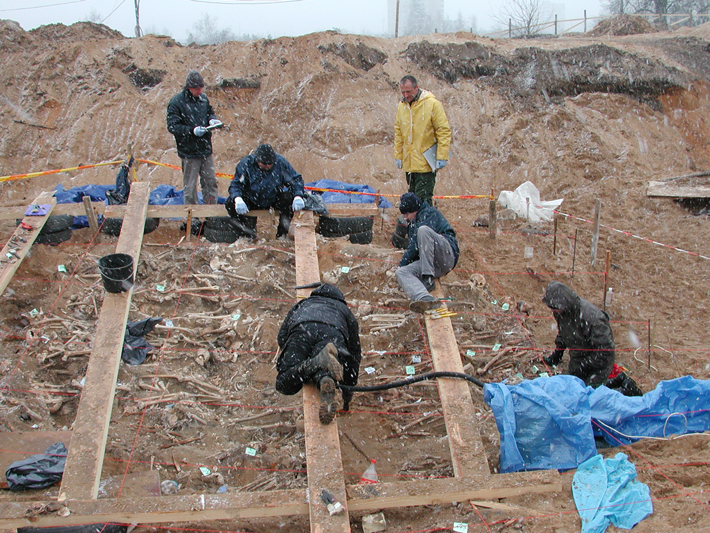 In 2001, construction in Vilnius, Lithuania, revealed a mass grave of more than 1,000 soldiers and camp followers of Napoleon’s Grand Army who perished during the emperor’s disastrous 1812 retreat from Russia. Hundreds of thousands of men—and women—froze to death or succumbed to disease and starvation on the march.
In 2001, construction in Vilnius, Lithuania, revealed a mass grave of more than 1,000 soldiers and camp followers of Napoleon’s Grand Army who perished during the emperor’s disastrous 1812 retreat from Russia. Hundreds of thousands of men—and women—froze to death or succumbed to disease and starvation on the march.
Now the remains, recovered by a team of French and Lithuanian archaeologists, are the subject of a study, led by anthropologist Sammantha Holder of the University of Georgia, to determine the diets of those who died both before and during the events of 1812. Using stable isotope analysis, Holder and her colleagues have found diverse diets among the 78 individuals she analyzed. The soldiers in the Grand Army came from all over Europe and were stratified by status and rank, so Holder is not surprised that individual diets varied considerably.
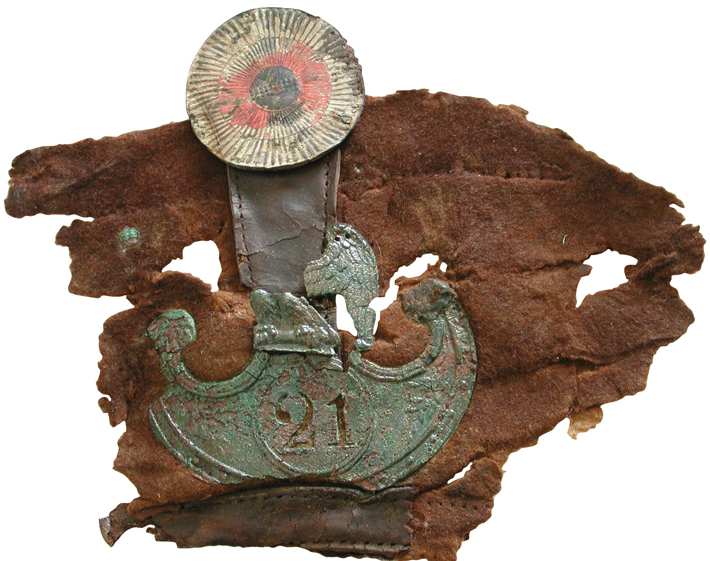 As for the period at the end of their lives, there is more research to be done. “My collaborators and I are building on the findings of this study by reconstructing diet closer to death, employing additional biochemical methods, and incorporating historical evidence,” Holder says. “One of the goals of our future research is to see if we can detect inadequate protein consumption in the skeletons of these individuals.”
As for the period at the end of their lives, there is more research to be done. “My collaborators and I are building on the findings of this study by reconstructing diet closer to death, employing additional biochemical methods, and incorporating historical evidence,” Holder says. “One of the goals of our future research is to see if we can detect inadequate protein consumption in the skeletons of these individuals.”
Afterlife on the Nile
By DANIEL WEISS
Monday, June 12, 2017
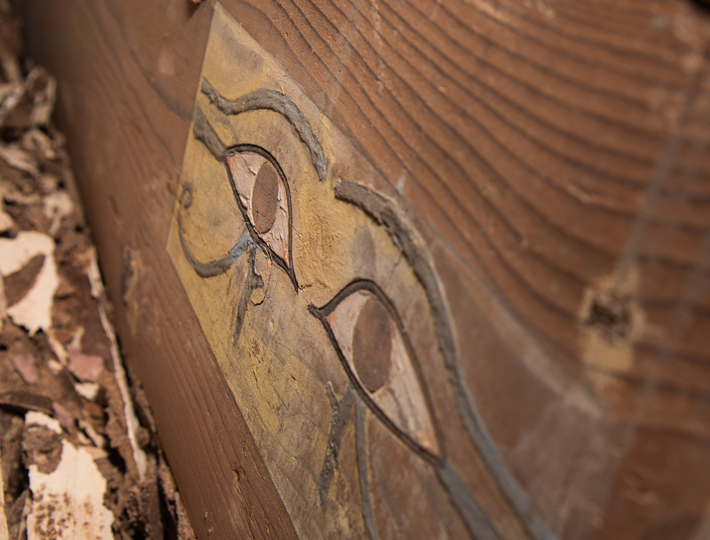 The intact tomb of a member of a powerful Egyptian family, dating to the nineteenth century B.C., has been discovered by the Spanish Archaeological Mission at Qubbet el-Hawa, across the Nile from Aswan. The burial’s outer coffin is severely damaged, most likely by termites, but the inner coffin is in fine condition. Made of Lebanese cedar, it bears the name of the deceased—Shemai—as well as those of his mother and father. Both Shemai’s father, Khema, and his eldest brother, Sarenput II, served as regional governors during Egypt’s 12th Dynasty.
The intact tomb of a member of a powerful Egyptian family, dating to the nineteenth century B.C., has been discovered by the Spanish Archaeological Mission at Qubbet el-Hawa, across the Nile from Aswan. The burial’s outer coffin is severely damaged, most likely by termites, but the inner coffin is in fine condition. Made of Lebanese cedar, it bears the name of the deceased—Shemai—as well as those of his mother and father. Both Shemai’s father, Khema, and his eldest brother, Sarenput II, served as regional governors during Egypt’s 12th Dynasty.
The tomb also contains six wooden models representing scenes of daily life and wooden boats thought to have been involved in the funerary trip of the deceased. “This kind of discovery is uncommon in Egyptian archaeology today,” says Alejandro Jiménez-Serrano of the University of Jaén. “We have been able to record and document the whole funerary structure.”
Knight Watch
By MARLEY BROWN
Monday, June 12, 2017
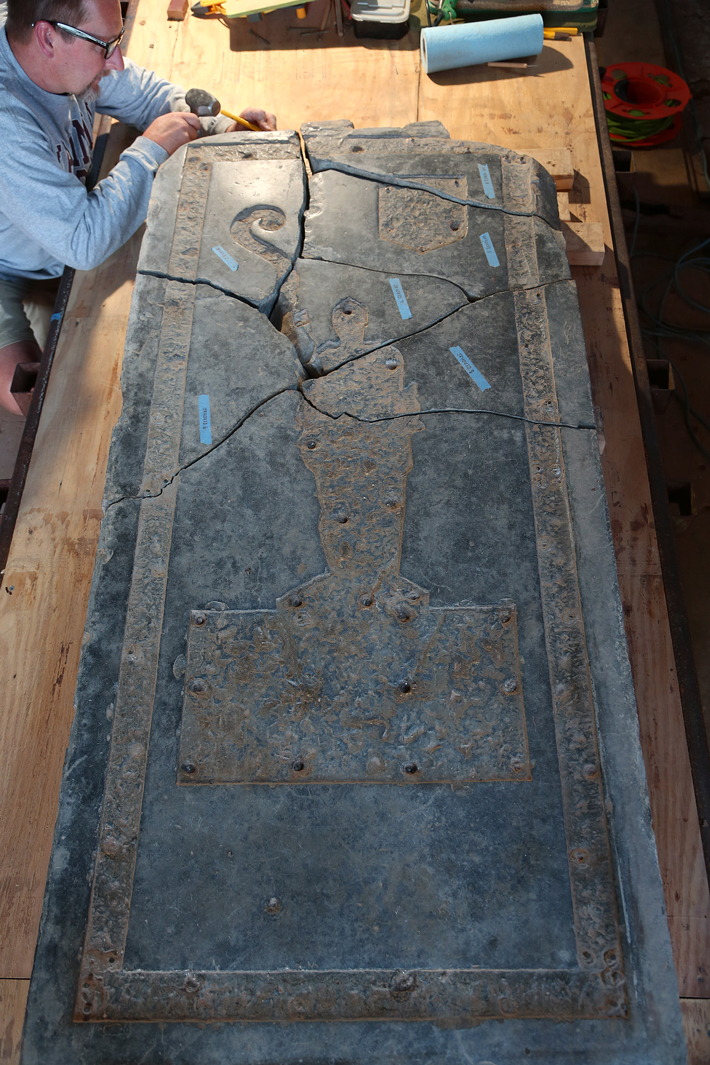 Archaeologists and conservators from Jamestown Rediscovery have begun to analyze a tombstone that has lain within iterations of the church at Jamestown for centuries. They believe the stone, which features the silhouette of a knight, belongs to Sir George Yeardley, a three-time colonial governor of Virginia, who died in 1627. Originally found in 1901 by the Association for the Preservation of Virginia Antiquities, the tombstone was broken into multiple pieces and is missing original monumental brasses that could definitively identify the deceased. However, the claim that it is Yeardley is bolstered by evidence from the will of a relative, Adam Thorowgood, which dates to 1680. Hayden Bassett, assistant curator, says that Thorowgood’s will states that he would like to have a tombstone of marble set forth with the coat of arms of Sir George Yeardley and himself, with the same inscription as on the broken tomb. “We believe that might be a reference to this particular tomb,” adds Bassett. According to Mary Anna Richardson, staff archaeologist, and William Kelso, director of research and interpretation, efforts to analyze Yeardley’s tombstone will be followed by an archaeological survey of the church’s chancel, slated for fall 2017, in the hope of uncovering Yeardley’s actual remains. An exhibit marking the 400th anniversary of the first representative assembly meeting in Virginia, which began in 1619 under Yeardley’s governorship, is planned for 2019.
Archaeologists and conservators from Jamestown Rediscovery have begun to analyze a tombstone that has lain within iterations of the church at Jamestown for centuries. They believe the stone, which features the silhouette of a knight, belongs to Sir George Yeardley, a three-time colonial governor of Virginia, who died in 1627. Originally found in 1901 by the Association for the Preservation of Virginia Antiquities, the tombstone was broken into multiple pieces and is missing original monumental brasses that could definitively identify the deceased. However, the claim that it is Yeardley is bolstered by evidence from the will of a relative, Adam Thorowgood, which dates to 1680. Hayden Bassett, assistant curator, says that Thorowgood’s will states that he would like to have a tombstone of marble set forth with the coat of arms of Sir George Yeardley and himself, with the same inscription as on the broken tomb. “We believe that might be a reference to this particular tomb,” adds Bassett. According to Mary Anna Richardson, staff archaeologist, and William Kelso, director of research and interpretation, efforts to analyze Yeardley’s tombstone will be followed by an archaeological survey of the church’s chancel, slated for fall 2017, in the hope of uncovering Yeardley’s actual remains. An exhibit marking the 400th anniversary of the first representative assembly meeting in Virginia, which began in 1619 under Yeardley’s governorship, is planned for 2019.
Late Paleolithic Masterpieces
By ERIC A. POWELL
Monday, June 12, 2017
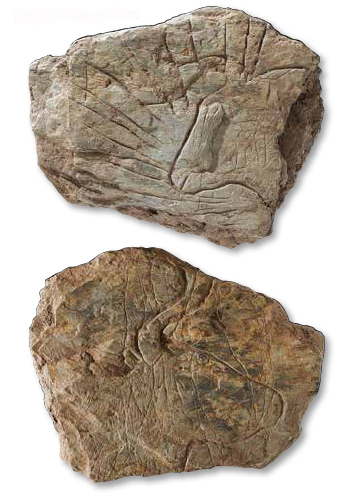 The people of the Paleolithic Magdalenian period in Spain and France created great works of figurative art such as the Lascaux cave paintings, which realistically depict a rich variety of wildlife. But scholars have long believed that around 14,000 years ago, that dramatic artistic tradition came to a sudden end. People of the succeeding Azilian period were thought to have completely stopped making animal figures, and instead focused their creative energies on etching and painting abstract designs on pebbles. But the recent discovery of 45 engraved stone tablets along with Early Azilian tools at a rock shelter in Brittany has shown that, in fact, some Azilian people carried on the artistic tradition of their Magdalenian ancestors.
The people of the Paleolithic Magdalenian period in Spain and France created great works of figurative art such as the Lascaux cave paintings, which realistically depict a rich variety of wildlife. But scholars have long believed that around 14,000 years ago, that dramatic artistic tradition came to a sudden end. People of the succeeding Azilian period were thought to have completely stopped making animal figures, and instead focused their creative energies on etching and painting abstract designs on pebbles. But the recent discovery of 45 engraved stone tablets along with Early Azilian tools at a rock shelter in Brittany has shown that, in fact, some Azilian people carried on the artistic tradition of their Magdalenian ancestors.
University of Nice archaeologist Nicolas Naudinot led the team that unearthed the engravings and says they resemble elaborate Magdalenian depictions of horses and a kind of wild cattle known as an aurochs. One bull is even shown with rays emanating from its head, the only such example of a “shining” animal known in prehistoric European art. Naudinot says the rays were added some time after the original head was carved, because the bull’s horns were reengraved over the lines. “The prehistoric people wanted the rays to be in the background,” says Naudinot, who speculates they could be a rendering of the sun, or perhaps they were simply symbolic abstractions, similar to the ones later Azilian people would carve on pebbles.
Advertisement
Advertisement
IN THIS ISSUE
From the Trenches
Ka-Ching!
Off the Grid
While You Are Waiting
A Dangerous Island
House Rules
Renaissance Melody
Take Me Out to the Ball Game
Tomb Couture
Not So Pearly Whites
Late Paleolithic Masterpieces
Afterlife on the Nile
Knight Watch
The Grand Army Diet
Angry Birds
World Roundup
First World War booze, Russian bear grease, Mediterranean mystery religion, and exploring under Algiers
Artifact
A venerable bead
Advertisement

Recent Issues
-
 May/June 2024
May/June 2024
-
 March/April 2024
March/April 2024
-
 January/February 2024
January/February 2024
-
 November/December 2023
November/December 2023
-
 September/October 2023
September/October 2023
-
 July/August 2023
July/August 2023
-
 May/June 2023
May/June 2023
-
 March/April 2023
March/April 2023
-
 January/February 2023
January/February 2023
-
 November/December 2022
November/December 2022
-
 September/October 2022
September/October 2022
-
 July/August 2022
July/August 2022
-
 May/June 2022
May/June 2022
-
 March/April 2022
March/April 2022
-
 January/February 2022
January/February 2022
-
 November/December 2021
November/December 2021
-
 September/October 2021
September/October 2021
-
 July/August 2021
July/August 2021
-
 May/June 2021
May/June 2021
-
 March/April 2021
March/April 2021
-
 January/February 2021
January/February 2021
-
 November/December 2020
November/December 2020
-
 September/October 2020
September/October 2020
-
 July/August 2020
July/August 2020
-
 May/June 2020
May/June 2020
-
 March/April 2020
March/April 2020
-
 January/February 2020
January/February 2020
-
 November/December 2019
November/December 2019
-
 September/October 2019
September/October 2019
-
 July/August 2019
July/August 2019
-
 May/June 2019
May/June 2019
-
 March/April 2019
March/April 2019
-
 January/February 2019
January/February 2019
-
 November/December 2018
November/December 2018
-
 September/October 2018
September/October 2018
-
 July/August 2018
July/August 2018
-
 May/June 2018
May/June 2018
-
 March/April 2018
March/April 2018
-
 January/February 2018
January/February 2018
-
 November/December 2017
November/December 2017
-
 September/October 2017
September/October 2017
-
 July/August 2017
July/August 2017
-
 May/June 2017
May/June 2017
-
 March/April 2017
March/April 2017
-
 January/February 2017
January/February 2017
-
 November/December 2016
November/December 2016
-
 September/October 2016
September/October 2016
-
 July/August 2016
July/August 2016
-
 May/June 2016
May/June 2016
-
 March/April 2016
March/April 2016
-
 January/February 2016
January/February 2016
-
 November/December 2015
November/December 2015
-
 September/October 2015
September/October 2015
-
 July/August 2015
July/August 2015
-
 May/June 2015
May/June 2015
-
 March/April 2015
March/April 2015
-
 January/February 2015
January/February 2015
-
 November/December 2014
November/December 2014
-
 September/October 2014
September/October 2014
-
 July/August 2014
July/August 2014
-
 May/June 2014
May/June 2014
-
 March/April 2014
March/April 2014
-
 January/February 2014
January/February 2014
-
 November/December 2013
November/December 2013
-
 September/October 2013
September/October 2013
-
 July/August 2013
July/August 2013
-
 May/June 2013
May/June 2013
-
 March/April 2013
March/April 2013
-
 January/February 2013
January/February 2013
-
 November/December 2012
November/December 2012
-
 September/October 2012
September/October 2012
-
 July/August 2012
July/August 2012
-
 May/June 2012
May/June 2012
-
 March/April 2012
March/April 2012
-
 January/February 2012
January/February 2012
-
 November/December 2011
November/December 2011
-
 September/October 2011
September/October 2011
-
 July/August 2011
July/August 2011
-
 May/June 2011
May/June 2011
-
 March/April 2011
March/April 2011
-
 January/February 2011
January/February 2011
Advertisement






